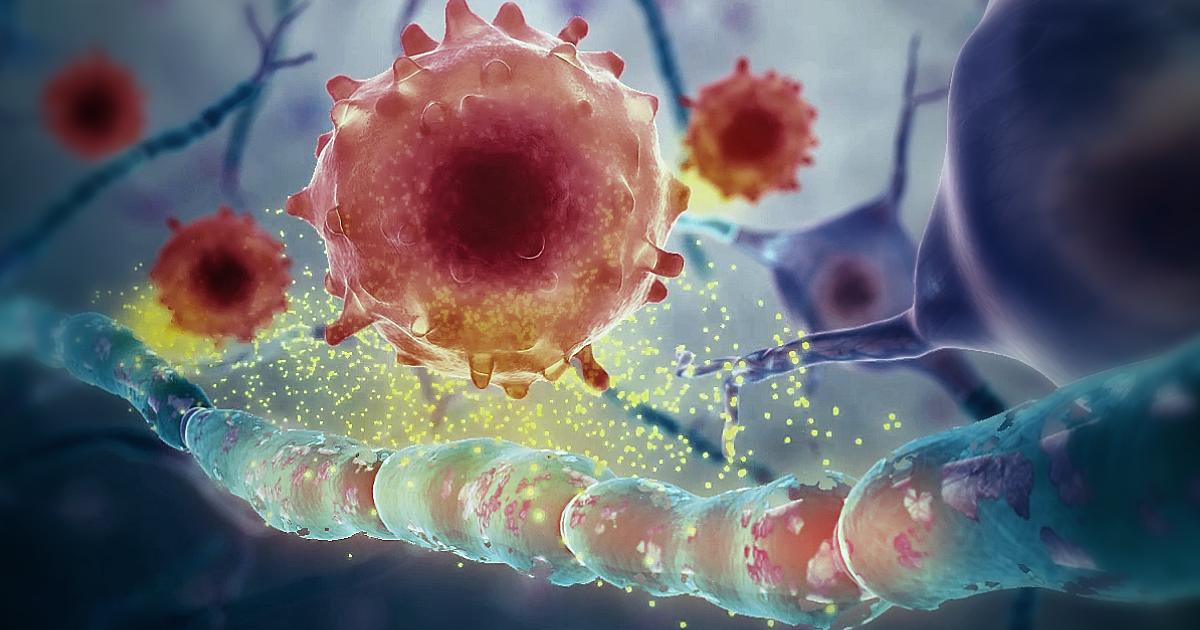15 Causes And Risk Factors Linked To Multiple Sclerosis
Multiple sclerosis (MS) isn’t just one disease—it’s a complex, unpredictable condition that unfolds differently for every person it affects. Characterized by damage to the brain, spinal cord, and optic nerves, MS can disrupt balance, vision, movement, and more. What makes it especially challenging is that its cause isn’t singular. It’s an intricate web of immune dysfunction, environmental triggers, genetic factors, and possible viral activators. Diagnosis often takes time, requiring the elimination of other conditions through MRIs, spinal taps, and blood tests. There’s no known cure yet, but understanding what might trigger or worsen MS is a powerful first step toward better management. That’s why we’ve expanded our list to 15 Possible Causes and Risk Factors for Multiple Sclerosis You Need to Know. From gender and climate to infections and thyroid disease, each factor brings new insight into how this condition starts—and how we might stop it from progressing. The more we know, the better we fight.
1. Immune System Malfunction

The immune system of multiple sclerosis patients causes the central nervous system or the brain and spinal cord to become inflamed and damaged. There are a few main types of immune cells involved in the affected individual's abnormal immune response. T-cells enter the central nervous system through the blood vessels after becoming activated in the lymph system. When the T-cells enter the central nervous system, they release harmful chemicals that cause damage and inflammation to the tissues of the brain and spinal cord. Damage occurs to the nerve fibers, their myelin sheathing, and the cells that produce myelin. The type of cells in the immune system responsible for deactivating inflammation or T-regulatory cells are non-functional in multiple sclerosis patients. T-cells help activate the other type of immune system cell involved with multiple sclerosis called B-cells, which stimulate the action of certain proteins and make antibodies that cause direct damage to the cells in the central nervous system. A combination of these malfunctions in an individual's immune system causes multiple sclerosis to occur.
2. Gender And Age

An individual's gender and age may have an impact on their risk of developing multiple sclerosis. The relapsing forms of multiple sclerosis such as relapsing-remitting multiple sclerosis and progressive-relapsing multiple sclerosis are found much more commonly in females than they are in males. In primary-progressive multiple sclerosis and secondary-progressive multiple sclerosis, the distribution of individuals who are affected is equally divided between males and females. Multiple sclerosis is diagnosed between forty-five and sixty-four years old more often than it is within any other age groups. Between thirty and thirty-five years old is when most individuals tend to experience their first symptomatic manifestations of multiple sclerosis. Different types of multiple sclerosis affect certain age groups in different ways than others. For example, individuals who are fifty years old or older at the time they are diagnosed with multiple sclerosis are more likely to be affected by one of the more progressive variations of the disease.
3. Thyroid Disease

Individuals affected by thyroid disease may be at an increased risk of developing multiple sclerosis. Thyroid disease occurs when an individual's thyroid gland produces too little or too much thyroid hormone. Hypothyroidism, the production of too little thyroid hormone, is a common occurrence among patients diagnosed with multiple sclerosis. Individuals affected by multiple sclerosis naturally have a deficiency in some of the enzymes required for their small intestine to digest certain dietary proteins. These dietary proteins are made up of amino acids required for the body to perform numerous critical functions. Due to this mechanism, multiple sclerosis patients lack the amino acids tyrosine and phenylalanine. The thyroid gland requires an adequate supply of tyrosine in order to make enough of both of the main thyroid hormones. This chain of events can explain why hypothyroidism is commonly associated with multiple sclerosis.
4. Climate

Climate can be one of the few environmental factors that can increase an individual's risk of developing multiple sclerosis. This condition occurs most commonly in the regions of the world that are furthest away from the earth's equator. Individuals who were born in one area but migrated to another area before they reached fifteen years old assume the multiple sclerosis risk of the new area. Individuals who live in regions characterized by temperate climates like Canada, New Zealand, northern United States, Europe, and southeastern Australia have a greater risk of developing multiple sclerosis than those who live in warmer climates. The reason for this is because surpassing exposure to sunlight in warmer regions allows an individual's body to produce a greater amount of vitamin D. The exact mechanism is unclear, but the role of vitamin D in the immune system is said to play a factor in the development of multiple sclerosis. Furthermore, climate can influence multiple sclerosis clusters, which are very high numbers of multiple sclerosis cases at specific times in specific locations. These clusters are caused by exposure to some type of environmental agent in a certain climate prior to when an individual reaches puberty.
5. Certain Infections

Infectious agents are known to be a key factor in triggering an individual to develop multiple sclerosis. While viral infections of certain types are never a single factor that results in the development of multiple sclerosis, they do play a considerable role in triggering it. Epstein-Barr virus is the virus in humans that causes mononucleosis. In infectious mononucleosis patients, this virus activates the HERV-W/MSRV retrovirus. This activation is associated with multiple sclerosis development even though the mechanism of how is unclear. Infection with the human herpesvirus 6 may cause an individual to be at an increased risk of triggering multiple sclerosis. The role of HHV-6 in multiple sclerosis is associated with an increase in the HHV-6 antibodies produced by the affected individual's immune system. The relations between viral infections and multiple sclerosis are often found when the proteins present in the cerebral spinal fluid of multiple sclerosis patients are the same as those found in individuals with certain nervous system diseases known to be caused by specific viruses.
6. Gut Microbiome Imbalance

Emerging research suggests that your gut may play a bigger role in MS than once believed. The gut microbiome—home to trillions of bacteria—helps regulate immune responses. In MS patients, studies have found altered gut flora, including decreased levels of anti-inflammatory bacteria and increased pro-inflammatory strains. This imbalance can trigger systemic inflammation, potentially contributing to the immune system mistakenly attacking the central nervous system. While the exact mechanisms are still under investigation, probiotic therapies and diet-based interventions are being explored as future treatment avenues. It’s not just what you eat—it’s how your microbiome responds that may influence MS progression.
7. Smoking and Tobacco Exposure

Smoking doesn’t just damage your lungs—it heightens your risk for developing MS and may accelerate disease progression. Tobacco use triggers chronic inflammation, alters immune cell behavior, and may promote breakdown of the blood-brain barrier, allowing harmful cells to access the nervous system. Studies show that smokers are significantly more likely to develop MS than non-smokers, and that quitting may slow the disease course. Even secondhand smoke exposure during childhood has been linked to increased MS risk later in life. In MS, every inflammatory hit counts—and cigarettes are one of the most preventable ones.
8. Low Vitamin D Levels

Beyond its bone-building benefits, vitamin D plays a crucial role in immune modulation. Low levels of this "sunshine vitamin" have been strongly associated with an increased risk of developing MS, especially in individuals living in northern latitudes. Vitamin D helps regulate T-cell activity, reducing the chances of an autoimmune attack on the nervous system. Deficiency in childhood or adolescence may be particularly critical. While supplements alone can’t prevent MS, maintaining optimal vitamin D levels through safe sun exposure and diet may offer a layer of protection. It's a simple factor with outsized influence on immune resilience.
9. Genetic Predisposition

MS doesn’t follow a strict hereditary pattern, but genetics do matter. Certain genes—especially those related to immune function like HLA-DRB1—have been linked to increased MS risk. If a first-degree relative has MS, your own risk is 10–20 times higher than the general population. That said, most people with a genetic predisposition never develop the disease, indicating that environmental and lifestyle triggers also play critical roles. Genetics load the gun, but environment pulls the trigger. Understanding your family history can help you stay alert to early symptoms and consider preventative strategies if risk factors overlap.
10. Adolescent Obesity

Obesity, especially during adolescence, may significantly raise the risk of developing MS later in life. Excess fat tissue produces inflammatory cytokines that can disturb normal immune function—potentially priming the body for autoimmune misfires. Additionally, obesity is often linked to lower vitamin D levels, compounding risk. Girls who are obese during their teenage years appear to have a particularly heightened vulnerability. This connection has prompted new research into how metabolic and inflammatory pathways intersect with immune regulation. It's a reminder that MS risk isn’t just rooted in neurology—it can begin with lifestyle patterns long before the first symptom appears.
11. Shift Work and Disrupted Sleep Cycles

Circadian rhythm disruptions—common in night-shift workers and frequent travelers—may influence MS risk by interfering with immune regulation and hormone production. Melatonin, which helps modulate immune function, is suppressed by artificial light at night. Irregular sleep cycles also increase systemic inflammation and stress hormone levels, both of which have been implicated in autoimmune responses. While the link is still being studied, several large-scale investigations have shown that people with long-term shift work history, especially women, have a higher incidence of MS. Protecting your sleep may not just safeguard your mental health—it could help protect your nervous system, too.
12. Epstein-Barr Virus (EBV) Reactivation

While EBV infection is nearly universal, its reactivation in adulthood may play a pivotal role in triggering MS. Studies show that individuals who developed mononucleosis (a common EBV illness) during adolescence are significantly more likely to later be diagnosed with MS. The theory is that EBV may alter B-cell function in a way that primes the immune system for a future attack on myelin—the protective sheath around nerves. One landmark study found that virtually all MS patients had prior EBV exposure. While the virus alone isn’t enough to cause MS, it’s now considered one of the strongest known risk factors.
13. Occupational or Environmental Toxin Exposure

Exposure to certain toxins—such as organic solvents, industrial chemicals, or heavy metals—may increase MS risk by altering immune regulation or damaging nervous system tissue directly. Some epidemiological studies have shown increased MS incidence in individuals working with petroleum products, in agriculture, or near industrial waste sites. These exposures may not act alone but instead amplify risk in genetically predisposed individuals. While more research is needed, this connection highlights the importance of workplace protections and environmental health. If you’ve had chronic exposure to toxins and start developing neurological symptoms, it’s worth flagging to your healthcare provider.
14. Hormonal Changes and Pregnancy

Hormonal fluctuations appear to play a role in how MS manifests, particularly in women. Many female patients report fewer relapses during pregnancy—especially in the third trimester—followed by a spike in disease activity postpartum. Estrogen and progesterone are thought to have protective effects on the nervous system and may reduce inflammation. These observations are prompting new studies into hormone-based MS therapies. Additionally, women with irregular menstrual cycles or conditions like PCOS may have a slightly altered risk profile. MS doesn’t just affect the nervous system—it intersects with hormonal rhythms in powerful and still unfolding ways.
15. Head Trauma or Concussion History

Though not a direct cause, past head trauma—particularly concussions—has been examined for its potential role in triggering MS in genetically susceptible individuals. Some researchers believe trauma could disrupt the blood-brain barrier or activate dormant viral agents, sparking an autoimmune response. The data is mixed, but several studies have noted a modest increase in MS risk following significant or repeated head injuries. While one concussion won’t cause MS, a history of trauma may be one of several factors that nudge the immune system into overdrive. It’s another layer in the complex mosaic of MS development.
Multiple sclerosis isn’t the result of a single cause—it’s a layered, unpredictable collision of genetics, immunity, environment, and life experience. As we've expanded our list to 15 possible causes and risk factors, one thing becomes clear: MS doesn't follow a straight line. From viral reactivations and gut imbalances to hormone shifts and adolescent health patterns, the triggers are as diverse as the people living with it. But knowledge is power. Every factor we identify brings us closer to earlier detection, better prevention, and smarter treatment. Whether you're navigating your own diagnosis, supporting a loved one, or simply seeking answers, understanding the wide spectrum of MS risk gives you the tools to ask better questions—and take informed action. MS may be complex, but you don’t have to face it blindly. The science is evolving, and with it, so is the hope. Because the more we untangle, the more we empower.